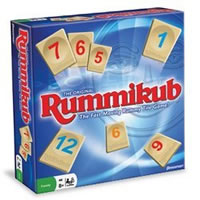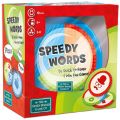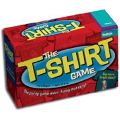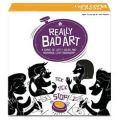
Official Rummikub Rules
How To Play Rummikub
2 - 4
Players
8+
Ages
45 MIN
Play Time
$17
Price
Rummikub is a tile-based game that combines elements of strategy, luck, and skill. Played with a set of numbered tiles, typically ranging from 1 to 13 in four different colors, along with two joker tiles, players aim to be the first to empty their rack by creating sets and runs of tiles on the table. A set consists of three or four tiles of the same number but different colors, while a run is a sequence of consecutive numbers in the same color. The game begins with players drawing tiles from the pool and strategically rearranging them on their racks to form valid combinations that can be played onto the table.
The gameplay of Rummikub revolves around careful observation, strategic planning, and tactical decision-making. Players must balance the risk of discarding tiles that may be useful to their opponents with the reward of freeing up space on their rack for new tiles. Successful players utilize their tiles efficiently, aiming to create melds on the table while disrupting their opponents' plans. The element of luck adds unpredictability to the game, as drawing the right tiles at the right time can greatly influence the outcome.
Rummikub's accessible rules and engaging gameplay make it a popular choice for players of all ages and skill levels. Its blend of strategy and luck ensures that each game is dynamic and unpredictable, offering endless opportunities for creative thinking and strategic maneuvers. Whether played casually with family and friends or competitively in tournaments, Rummikub provides a stimulating and enjoyable gaming experience that has captivated players around the world for decades.
Rummikub is a great game for both adults and children alike. Join in the fast paced fun while trying to combine your tiles in runs or sets. Rummikkub, similar to the card game, gets everyone involved. Rummikub game play moves along thanks to the joker tiles (wilds) and helps players out when they don't quite have the tile they need. Learning how to play Rummikub dose not take a lot of time. Bring out the fun and start playing Rummikub today!
The gameplay of Rummikub revolves around careful observation, strategic planning, and tactical decision-making. Players must balance the risk of discarding tiles that may be useful to their opponents with the reward of freeing up space on their rack for new tiles. Successful players utilize their tiles efficiently, aiming to create melds on the table while disrupting their opponents' plans. The element of luck adds unpredictability to the game, as drawing the right tiles at the right time can greatly influence the outcome.
Rummikub's accessible rules and engaging gameplay make it a popular choice for players of all ages and skill levels. Its blend of strategy and luck ensures that each game is dynamic and unpredictable, offering endless opportunities for creative thinking and strategic maneuvers. Whether played casually with family and friends or competitively in tournaments, Rummikub provides a stimulating and enjoyable gaming experience that has captivated players around the world for decades.
Rummikub is a great game for both adults and children alike. Join in the fast paced fun while trying to combine your tiles in runs or sets. Rummikkub, similar to the card game, gets everyone involved. Rummikub game play moves along thanks to the joker tiles (wilds) and helps players out when they don't quite have the tile they need. Learning how to play Rummikub dose not take a lot of time. Bring out the fun and start playing Rummikub today!
- 106 Tiles (2 Sets Of Tiles Numbered 1 To 13 In Four Colors: Black, Red, Blue, Orange; 2 Jokers)
- 4 Playing Racks
- Official Rummikub Game Rules And Instructions

Be the first player to get rid of all the tiles in your rack by forming sets and runs. The player who reaches the preset number of points will win the game.

Perparation: Put the tiles into the pouch and ensure they are thoroughly mixed. Every participant selects a tile; the individual who picks the tile with the highest number gets the first turn, and gameplay continues clockwise. Put the tiles back into the pouch and mix them again. Each player then draws 14 tiles and arranges them on their rack.
Game Play: There are two types of sets in the game:
If a player is unable to make a valid play or chooses not to, they must draw a tile from the pouch, and their turn ends. Subsequently, players can expand on existing sets on the table with tiles from their racks. If a player cannot add to existing sets, they draw from the pouch, and their turn ends. Importantly, a player cannot immediately lay down a tile they've just picked; they must wait until their next turn.
The game continues until one player clears their rack and declares "Rummikub," signaling the end of the round. At this point, players tally their points according to the scoring rules. If the pouch empties before a player declares "Rummikub," the game continues until no further valid plays can be made, culminating the round.
Time Limit: Each player has a maximum of 2 minutes per turn. Should a player exceed this time limit, they must draw a tile from the pouch, and their turn concludes.
Incomplete Runs: If a player fails to successfully extend or adjust existing sets on the table, they are required to restore the tiles to their original positions, retrieve the tiles they played, and draw three tiles from the pouch.
Building on Sets: Players are permitted to expand upon existing sets using any of the following methods, or a combination thereof, provided that all sets on the table are valid and there are no loose tiles remaining at the conclusion of their turn.
The Joker: In the game, there are two jokers available. They possess the unique ability to substitute for any tile within a set. When a joker is employed within the initial set, it contributes the value of the tiles it represents. A player can reclaim a joker from a set on the table if, during their turn, they can replace it with a tile of identical numerical value and color. The replacement tile must be drawn from the player's rack rather than from the table. If dealing with a group of three tiles, the joker can be exchanged with a tile of either of the missing colors. Once a joker has been replaced, it must be utilized within the same turn alongside two or more tiles from the player's rack to form a new set. Retrieval of a joker is not permitted until a player has laid their initial set(s). Sets containing a joker are subject to expansions, divisions, or tile removals. However, any joker left on a player's rack at the game's conclusion incurs a penalty value of 30 points.
Strategy: At the onset of a Rummikub round, progress may seem gradual, but as the table evolves, more strategic opportunities arise. In the early phases, it's advantageous to reserve some tiles, allowing other players to initiate plays and expand the table, thus opening up more possibilities. Occasionally, it's strategic to withhold the fourth tile of a group or run, opting to lay only three initially. This tactic facilitates laying a tile on the subsequent turn instead of drawing from the pouch. Maintaining a joker on one's rack can also be advantageous, though it carries the risk of incurring a penalty of 30 points if caught with it when another player declares "Rummikub."
Scoring: Upon a player clearing their rack and declaring "Rummikub," losers tally the value of the tiles remaining on their racks, resulting in a negative score. The winner receives a positive score equivalent to the total points of all the losing players. After each round, players sum their negative and positive scores to ascertain their total score. The player with the highest score at the end of the game emerges as the victor. It's important to ensure that the sum of positive scores matches the total of negative scores in each round and in the final tally.
In the event that all tiles in the pouch are exhausted before any player declares "Rummikub," the player with the lowest total value on their rack wins the round. Each loser calculates their total tile value and deducts it from the winner's total, resulting in a negative score. The sum of these negative scores is then added to the winner's score as a positive amount. After scoring the round, return all tiles to the pouch and commence the next round as per the setup instructions.
Winning: The player with the highest score at the conclusion of the game claims victory.
Please keep in mind that the official Rummikub PDF rules listed below could be different depending on the version you have. They should be an exact copy of what came in your original packaging. Download them to view now or print them for later use.
Game Play: There are two types of sets in the game:
- A group consists of either three or four tiles of the same number but in different colors.
- A run is a sequence of three or more consecutive numbers, all in the same color. Notably, the number 1 is always considered the lowest number and cannot be followed by the number 13.
If a player is unable to make a valid play or chooses not to, they must draw a tile from the pouch, and their turn ends. Subsequently, players can expand on existing sets on the table with tiles from their racks. If a player cannot add to existing sets, they draw from the pouch, and their turn ends. Importantly, a player cannot immediately lay down a tile they've just picked; they must wait until their next turn.
The game continues until one player clears their rack and declares "Rummikub," signaling the end of the round. At this point, players tally their points according to the scoring rules. If the pouch empties before a player declares "Rummikub," the game continues until no further valid plays can be made, culminating the round.
Time Limit: Each player has a maximum of 2 minutes per turn. Should a player exceed this time limit, they must draw a tile from the pouch, and their turn concludes.
Incomplete Runs: If a player fails to successfully extend or adjust existing sets on the table, they are required to restore the tiles to their original positions, retrieve the tiles they played, and draw three tiles from the pouch.
Building on Sets: Players are permitted to expand upon existing sets using any of the following methods, or a combination thereof, provided that all sets on the table are valid and there are no loose tiles remaining at the conclusion of their turn.
The Joker: In the game, there are two jokers available. They possess the unique ability to substitute for any tile within a set. When a joker is employed within the initial set, it contributes the value of the tiles it represents. A player can reclaim a joker from a set on the table if, during their turn, they can replace it with a tile of identical numerical value and color. The replacement tile must be drawn from the player's rack rather than from the table. If dealing with a group of three tiles, the joker can be exchanged with a tile of either of the missing colors. Once a joker has been replaced, it must be utilized within the same turn alongside two or more tiles from the player's rack to form a new set. Retrieval of a joker is not permitted until a player has laid their initial set(s). Sets containing a joker are subject to expansions, divisions, or tile removals. However, any joker left on a player's rack at the game's conclusion incurs a penalty value of 30 points.
Strategy: At the onset of a Rummikub round, progress may seem gradual, but as the table evolves, more strategic opportunities arise. In the early phases, it's advantageous to reserve some tiles, allowing other players to initiate plays and expand the table, thus opening up more possibilities. Occasionally, it's strategic to withhold the fourth tile of a group or run, opting to lay only three initially. This tactic facilitates laying a tile on the subsequent turn instead of drawing from the pouch. Maintaining a joker on one's rack can also be advantageous, though it carries the risk of incurring a penalty of 30 points if caught with it when another player declares "Rummikub."
Scoring: Upon a player clearing their rack and declaring "Rummikub," losers tally the value of the tiles remaining on their racks, resulting in a negative score. The winner receives a positive score equivalent to the total points of all the losing players. After each round, players sum their negative and positive scores to ascertain their total score. The player with the highest score at the end of the game emerges as the victor. It's important to ensure that the sum of positive scores matches the total of negative scores in each round and in the final tally.
In the event that all tiles in the pouch are exhausted before any player declares "Rummikub," the player with the lowest total value on their rack wins the round. Each loser calculates their total tile value and deducts it from the winner's total, resulting in a negative score. The sum of these negative scores is then added to the winner's score as a positive amount. After scoring the round, return all tiles to the pouch and commence the next round as per the setup instructions.
Winning: The player with the highest score at the conclusion of the game claims victory.
Please keep in mind that the official Rummikub PDF rules listed below could be different depending on the version you have. They should be an exact copy of what came in your original packaging. Download them to view now or print them for later use.
Share with us your comments, funny stories, tips, advice, strategies, creative ways to play, questions about playing, problems with the directions, etc. All submissions will be reviewed within 24 hours.
Koba says:
Can i determine a colour of the joker as the 3rd one in a series of 3 equal numbers..?
03-18-2023
Can i determine a colour of the joker as the 3rd one in a series of 3 equal numbers..?
John says:
Just reading through the comments. It seems that there is a load of confusion over how to play and, later, use the joker. I play quite regularly with different groups of people and each has their own variant as to how the joker 'MUST' be used! I always refer to the, very limited, wording in the rules pamphlet. If the joker is used for the initial meld, it's colour and value are determined by what else is played - ie 3 x 10s, the joker has a value of 10 but the colour is one of those not played - it can later be replaced by a number 10 of the colour not played. If the joker is in a run of, eg, reds - 7,8,9,J,11,12 it needs to be replaced by a red 10 in this instance Here is where the fun begins. There is a school that says the joker was in place of a red 10 so therefore it can only be used in another set to represent a red 10 - either a group of 10s or red 9, J, 11 - it now stays as a red 10 for the rest of the game! Whereas, the rules here seem clear enough, the joker can now represent any tile you wish, so I may play a black 8, the Joker and find an available black 9 off the table. I could form J,8,9 OR 8,9,J depending how I am feeling (I might have a black 5 which I hope I can drop if someone drops a black 6 or I pick one up soon)
07-17-2022
Just reading through the comments. It seems that there is a load of confusion over how to play and, later, use the joker. I play quite regularly with different groups of people and each has their own variant as to how the joker 'MUST' be used! I always refer to the, very limited, wording in the rules pamphlet. If the joker is used for the initial meld, it's colour and value are determined by what else is played - ie 3 x 10s, the joker has a value of 10 but the colour is one of those not played - it can later be replaced by a number 10 of the colour not played. If the joker is in a run of, eg, reds - 7,8,9,J,11,12 it needs to be replaced by a red 10 in this instance Here is where the fun begins. There is a school that says the joker was in place of a red 10 so therefore it can only be used in another set to represent a red 10 - either a group of 10s or red 9, J, 11 - it now stays as a red 10 for the rest of the game! Whereas, the rules here seem clear enough, the joker can now represent any tile you wish, so I may play a black 8, the Joker and find an available black 9 off the table. I could form J,8,9 OR 8,9,J depending how I am feeling (I might have a black 5 which I hope I can drop if someone drops a black 6 or I pick one up soon)
KSC says:
Can a player hold runs in his or her rack and pick a tile?
01-02-2022
Can a player hold runs in his or her rack and pick a tile?
Mary Kling says:
How do you find out the answer that was given to the question below. I have some of the same questions! Not terribly I Pad savvy, so please be VERY specific. Thx!
06-23-2020
How do you find out the answer that was given to the question below. I have some of the same questions! Not terribly I Pad savvy, so please be VERY specific. Thx!
Cheryl W says:
Can a person move around tiles on board to make different runs or sets but in this turn not use any of his tiles. Letting that be his turn. Or do you have to use at least 1 tile from your hand when making moves that will benefit you either in that turn or next turn. In other words when moving tiles on board you can only move them when they benefit you by using a tile from your hand. You cannot move tiles on board during your turn without using a tile from you own?
01-02-2020
Can a person move around tiles on board to make different runs or sets but in this turn not use any of his tiles. Letting that be his turn. Or do you have to use at least 1 tile from your hand when making moves that will benefit you either in that turn or next turn. In other words when moving tiles on board you can only move them when they benefit you by using a tile from your hand. You cannot move tiles on board during your turn without using a tile from you own?
Glenda says:
When you replace a joker do you have to have 2 on you rack to be able to reuse the joker
09-09-2019
When you replace a joker do you have to have 2 on you rack to be able to reuse the joker
EDDIE says:
Question: there was a set of 8s and a Joker, and a Blue 4, 5, 6, 7 and a Joker run on the board. I replaced the Joker with the required color of 8 and then removed the 7 & Joker and placed it with my Blue 9. It formed a Blue 7, 8 (Joker) and 9. Some of the players say the Joker may only be removed with a Blue 8 and it must come from my hand. I am of the belief that it was not "trapped" and could be used anywhere. Is a replaced Joker to always come from your hand or may I manipulate it into another run or group, provided I play "A" tile from my hand? We are gearing up for a simplified tournament (some rules had to be axed due to the memory of some of our Seniors). It is for fun.
07-18-2019
Question: there was a set of 8s and a Joker, and a Blue 4, 5, 6, 7 and a Joker run on the board. I replaced the Joker with the required color of 8 and then removed the 7 & Joker and placed it with my Blue 9. It formed a Blue 7, 8 (Joker) and 9. Some of the players say the Joker may only be removed with a Blue 8 and it must come from my hand. I am of the belief that it was not "trapped" and could be used anywhere. Is a replaced Joker to always come from your hand or may I manipulate it into another run or group, provided I play "A" tile from my hand? We are gearing up for a simplified tournament (some rules had to be axed due to the memory of some of our Seniors). It is for fun.
Ann says:
What to do if one player does not have 30 points to start playing and all tiles are in use. Would seem he cannot join in play at all.
10-22-2018
What to do if one player does not have 30 points to start playing and all tiles are in use. Would seem he cannot join in play at all.
Linda says:
Can I use a joker on an existing run or set without adding a tile from my hand? If not, how many tiles must I use from my hand?
09-13-2018
Can I use a joker on an existing run or set without adding a tile from my hand? If not, how many tiles must I use from my hand?
Frances Ellinwo says:
If a "red" joker (13), with black and blue 13s are down in a set, can another player "go out" by discarding his/her black 13 or must it be orange?
07-27-2018
If a "red" joker (13), with black and blue 13s are down in a set, can another player "go out" by discarding his/her black 13 or must it be orange?
doug says:
what does the joker count when using a a meld card ie its penalty value or the value of the tile eg nine
05-17-2018
what does the joker count when using a a meld card ie its penalty value or the value of the tile eg nine
Sandy says:
Must you always replace a Joker to use it in a new group, or can you remove it using its current color and number value in a new group as long as it is not needed in the group from which it is removed? Example: if its current function is "red 6" and a red 6 is needed in a new group, could you use the Joker as if it were actually a red 6?
03-11-2018
Must you always replace a Joker to use it in a new group, or can you remove it using its current color and number value in a new group as long as it is not needed in the group from which it is removed? Example: if its current function is "red 6" and a red 6 is needed in a new group, could you use the Joker as if it were actually a red 6?
Bob Nice says says:
I have a run of four tens the black ten is the joker can I pick up the black ten which is the joker and use it to make a run of 8,9,10 12/12/17
12-12-2017
I have a run of four tens the black ten is the joker can I pick up the black ten which is the joker and use it to make a run of 8,9,10 12/12/17
Caryl says:
If I have earlier melded, and later pick up a joker, can I use that joker with just one other tile from my hand to extend a run already on the table?
09-25-2017
If I have earlier melded, and later pick up a joker, can I use that joker with just one other tile from my hand to extend a run already on the table?
Holly says:
When initially laying down the tiles to make the required 30 points one player used a wild tile in her run and added in the number that the joker represented so it would add up to 30. Is this permitted?
08-20-2017
When initially laying down the tiles to make the required 30 points one player used a wild tile in her run and added in the number that the joker represented so it would add up to 30. Is this permitted?
Anna says:
At the start of the game, you have to get 30 to start, would it be okay to put down for example, two black 11 and a red 11? Or do they all have to be different colours? Please answer, in the middle of an argument with someone about this!!!
07-03-2017
At the start of the game, you have to get 30 to start, would it be okay to put down for example, two black 11 and a red 11? Or do they all have to be different colours? Please answer, in the middle of an argument with someone about this!!!
Linda says:
When playing,is it ok to break up a run of 3 consecutive numbers and add each to sets of the same number so that you can win even if you take no number from your hand?
06-18-2017
When playing,is it ok to break up a run of 3 consecutive numbers and add each to sets of the same number so that you can win even if you take no number from your hand?
Ann says:
If there is a red run on the table of 5-6-7 and I have a joker and a red nine in my hand, can I add the joker as a red 8 or do I have to use 2 tiles from my hand when I play the joker? Such that in the the example, that would mean I would add the joker as a red 8 and add a red 9 AND a red 10 from my hand.
03-25-2017
If there is a red run on the table of 5-6-7 and I have a joker and a red nine in my hand, can I add the joker as a red 8 or do I have to use 2 tiles from my hand when I play the joker? Such that in the the example, that would mean I would add the joker as a red 8 and add a red 9 AND a red 10 from my hand.
Nicole says:
You have a black 9 on your rack. In your play you have a black run 10 11 12 13. You also have a 3 of the 13 tiles (orange blue and red). To play your 9 can you pick up the black 13 and play that tile on the 3 13's already on the table be play your 9 In front of the 10. Is this a legal move.?
01-20-2017
You have a black 9 on your rack. In your play you have a black run 10 11 12 13. You also have a 3 of the 13 tiles (orange blue and red). To play your 9 can you pick up the black 13 and play that tile on the 3 13's already on the table be play your 9 In front of the 10. Is this a legal move.?
Dave A says:
Can a joke be played on the board as a 9 red if there are two 9 reds all ready in play on the board Creating a 3rd red 9 on the board
12-28-2016
Can a joke be played on the board as a 9 red if there are two 9 reds all ready in play on the board Creating a 3rd red 9 on the board
carol says:
how do you play the joker if I have--3-5s and one is the joker can I take the joker but have to replace with a 5 and in a run 1234567 and 4 is the joker can I split the run and take the (joker)=4 to use in my hand with my own 2 tiles
12-28-2016
how do you play the joker if I have--3-5s and one is the joker can I take the joker but have to replace with a 5 and in a run 1234567 and 4 is the joker can I split the run and take the (joker)=4 to use in my hand with my own 2 tiles
Krys says:
Do you have instructions for Word Rummikub
03-31-2016
Do you have instructions for Word Rummikub
Dianne says:
if there is a group of 4 on the table, can I add to that group, even though it means there will now be two of the same color ? ie, is a group limited to maximum of 4?
02-29-2016
if there is a group of 4 on the table, can I add to that group, even though it means there will now be two of the same color ? ie, is a group limited to maximum of 4?
Gramz says:
what count does the joker have if played in the first play? Such as, to get your 30 count lay down?
02-04-2016
what count does the joker have if played in the first play? Such as, to get your 30 count lay down?
Mildred says:
Why we can't used th joker as any numbers or color instead to have to chip's in the hands,when I have only one chip in my last hand?
08-16-2015
Why we can't used th joker as any numbers or color instead to have to chip's in the hands,when I have only one chip in my last hand?
Mary Moss says:
Assume I draw a Joker tile. On my next turn, can I play that Joker anywhere on the board...or...do I still have to play it with 2 other tiles from my hand?
03-22-2015
Assume I draw a Joker tile. On my next turn, can I play that Joker anywhere on the board...or...do I still have to play it with 2 other tiles from my hand?
marta c says:
If I have the Joker and another tile left in the game, can I put that joker down on a set that is already on the table?
01-29-2015
If I have the Joker and another tile left in the game, can I put that joker down on a set that is already on the table?
d smith says:
can the joker (smiley face) in a set of three be moved if the other 2 cards can be moved? EXAMPLE; 7of Black 7 of red,joker Move 7 of black to 8,9,10,of black,move 7 of red to 8,9,10of red and the joker to 8,9,10 of blue?
01-09-2015
can the joker (smiley face) in a set of three be moved if the other 2 cards can be moved? EXAMPLE; 7of Black 7 of red,joker Move 7 of black to 8,9,10,of black,move 7 of red to 8,9,10of red and the joker to 8,9,10 of blue?
carol says:
are u able to hold all ur tiles as long as you want before you put any down
10-04-2014
are u able to hold all ur tiles as long as you want before you put any down
diane says:
How do I press enter to submit my tiles. My time always runs out so I really can't play because I haven't figured out the most important part of the game!!! Please help!
05-02-2014
How do I press enter to submit my tiles. My time always runs out so I really can't play because I haven't figured out the most important part of the game!!! Please help!
Vi says:
Have been playing Rummikub with players who insist on arranging everyone's tiles in order on the table, with runs in color order and like numbers in order, i.e. 1's, 2's, etc. It does not seem appropriate for someone to control placement on the table.
10-30-2013
Have been playing Rummikub with players who insist on arranging everyone's tiles in order on the table, with runs in color order and like numbers in order, i.e. 1's, 2's, etc. It does not seem appropriate for someone to control placement on the table.
Here are some other games you might like to play at your next get together. Learning how to play new games can feel daunting at first but once you get the hang of it, it can be really fun to try out new games. You can also use our search feature at the top of the page to search for a specific criteria that might interest you. Who knows - you might just find your next favorite game.




